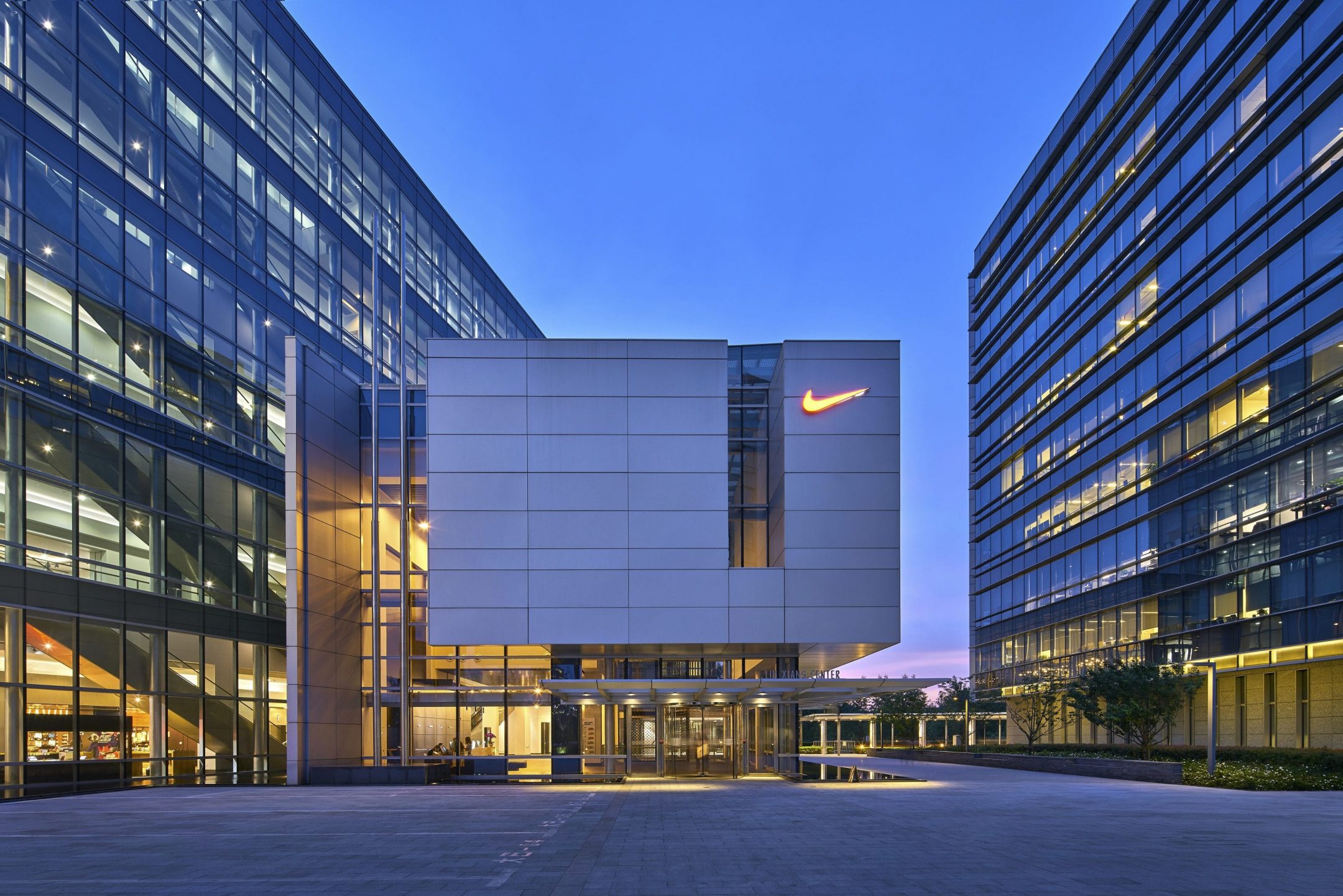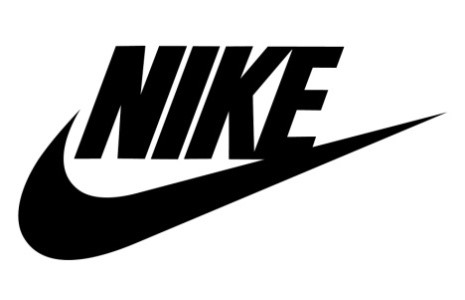Nike Inc. Earnings Report Analysis

- Nike Inc. (NYSE:NKE) exceeded EPS expectations with $1.01 against the forecasted $0.83, showcasing strong profitability.
- Revenue fell short at $12.61 billion versus the expected $12.86 billion, indicating a sales performance and market expectation mismatch.
- Analysts highlight challenges in market position and strategy, necessitating a strategic overhaul amidst tough competition and consumer preference shifts.
Nike Inc. (NYSE:NKE), a global leader in athletic footwear and apparel, recently reported its earnings, revealing a mixed picture of its financial health and market position. With an earnings per share (EPS) of $1.01, Nike exceeded analysts' expectations, which had been set at $0.83. This performance indicates a strong profitability on a per-share basis, showcasing the company's ability to generate earnings above what was anticipated by the market. However, the company's revenue of $12.61 billion, falling short of the estimated $12.86 billion, suggests a slight disconnect between sales performance and market expectations.
The backdrop of Nike's recent earnings report is a broader narrative of challenges and competition within the athletic wear sector. As highlighted by Travis Hoium in a video analysis for The Motley Fool, Nike has faced significant headwinds, including weak earnings and guidance, and a concerning lack of momentum in its core shoes and apparel sectors. This downturn is particularly alarming as competitors strengthen, challenging Nike's dominance in the market. The analysis underscores a potentially difficult path ahead for Nike, emphasizing the need for strategic adjustments to regain its footing.
Further complicating Nike's situation, RBC Capital analyst Piral Dadhania has adjusted his outlook on the company, maintaining a Sector Perform rating but lowering the price target from $100 to $75. This revision reflects concerns over Nike's market and product transition risks, suggesting a period of adjustment and potential vulnerability. Dadhania's analysis points to a "Fragmentation Hypothesis," indicating a shift in consumer preferences away from Nike's traditional strengths. This, combined with tougher competition, creates a challenging environment for Nike, necessitating a significant overhaul of its product lines and market strategy.
The financial metrics of Nike also paint a detailed picture of its valuation and financial health. With a price-to-earnings (P/E) ratio of 19.91, Nike is seen by investors as a company worth investing in, despite the challenges it faces. The price-to-sales (P/S) ratio of 2.21 and the enterprise value to sales (EV/Sales) ratio of 2.25 further highlight the company's market valuation in relation to its sales. Additionally, the enterprise value to operating cash flow (EV/OCF) ratio of 16.38 indicates how the market values the company's cash flow from operations. These financial ratios, combined with a debt-to-equity (D/E) ratio of 0.65 and a current ratio of 2.40, suggest that Nike, while facing significant challenges, maintains a solid financial foundation with the potential for strategic recovery and growth.
In summary, Nike's recent earnings report and the subsequent analysis by industry experts and financial analysts reveal a company at a crossroads. Despite outperforming earnings expectations, revenue shortfalls and broader market challenges highlight the need for strategic reassessment and adaptation. Nike's financial health, as indicated by its valuation ratios and debt management, provides a foundation for potential recovery. However, the company must navigate the complexities of market and product transitions carefully to maintain its leadership position in the competitive athletic wear industry.
| Symbol | Price | %chg |
|---|---|---|
| NKE.BA | 8400 | 0.71 |
| 7936.T | 3568 | -3.17 |
| 241590.KS | 7530 | -3.32 |
| METROBRAND.NS | 1243.6 | 1.23 |

Nike, Inc. (NYSE:NKE) Sees Positive Shift in Market Sentiment
- Argus Research upgraded Nike, Inc. (NYSE:NKE) to a "Buy" rating, indicating a bullish outlook for the stock.
- Nike's stock surged nearly 15% following its fourth-quarter earnings report, despite a decline in revenue and profits.
- Analysts are optimistic about Nike's recovery and future growth potential, reflecting a positive shift in market sentiment.
Nike, Inc. (NYSE:NKE) is a global leader in the design, development, and marketing of athletic footwear, apparel, equipment, and accessories. Known for its iconic "Swoosh" logo, Nike competes with other major brands like Adidas and Under Armour. The company has a strong presence worldwide and is a key player in the sportswear industry.
On July 6, 2025, Argus Research upgraded Nike's stock to a "Buy" rating, with the stock price at $76.39. This upgrade, reported by Benzinga, highlights Nike as a top large-cap gainer in the previous week. The upgrade comes amid a significant boost in Nike's stock, which has provided investors with renewed optimism.
Nike's stock experienced a remarkable surge of nearly 15% in a single trading session following its fourth-quarter earnings report on June 26. Despite a 12% decline in revenue and an 86% drop in profits for the quarter, the market's reaction was positive. Investors seem to be focusing on a potential comeback story for Nike, looking beyond the disappointing historical data.
Analysts have begun upgrading their outlooks on Nike, suggesting a belief that the company has overcome its challenges and is on the path to recovery. This shift in sentiment is supported by new signs of stability and control within the company. The positive market response reflects not only Nike's headline results but also the potential for future growth.
Nike's current stock price is $76.39, with today's trading range between $75.58 and $77.03. Over the past year, the stock has reached a high of $90.62 and a low of $52.28. With a market capitalization of approximately $112.75 billion and a trading volume of 12,022,568 shares today, Nike remains a significant player in the market.

Argus Upgrades Nike to Buy, Stock Gains 3%
Argus has upgraded NIKE (NYSE:NKE) to Buy from Hold, setting a price target of $85, citing signs of an ongoing recovery fueled by inventory normalization, improved pricing through e-commerce, and the company’s continued brand dominance. Following the upgrade, the company’s shares rose more than 3% intra-day today.
The firm noted that after aggressively clearing excess inventory in the second half of fiscal 2025, Nike’s product lineup is now more current and resonating better with consumers. Additionally, Nike is leveraging its direct-to-consumer and online channels to strengthen pricing power, supporting margins as demand stabilizes.
Argus remains bullish on Nike’s long-term prospects, emphasizing its leadership in the athletic apparel and footwear markets, bolstered by strong marketing, athlete endorsements, and a powerful brand that commands premium pricing, especially in high-end footwear.
While acknowledging the industry’s fierce competition, the analyst expects Nike to capitalize on its global scale, product innovation, and expanding presence in emerging markets to sustain growth. The upgrade reflects growing confidence that Nike’s strategic initiatives will drive a meaningful turnaround and support share price appreciation.

Nike Jumps 18% After Q4 Beat and Signs Turnaround Headwinds Are Easing
Shares of Nike (NYSE:NKE) surged over 18% intra-day today after the athletic giant reported fiscal fourth-quarter results that exceeded expectations and signaled that the worst financial impact from its turnaround plan is likely behind it.
Nike posted Q4 sales of $11.10 billion, down 12% year-over-year but better than analysts anticipated, helped by signs of stabilization in its core running category. North American sales dropped 11% to $4.7 billion, a decline that was milder than feared.
Earnings per share were $0.14, topping the consensus estimate of $0.12. CEO Elliott Hill’s upbeat remarks during the earnings call—highlighting that the business is poised to improve from here—fueled investor optimism. “It’s time to turn the page,” Hill declared.
Executives also outlined plans to shift more production from China to the U.S., aiming to mitigate potential cost increases from broad U.S. tariffs.
Looking ahead, Nike guided for first-quarter revenue to decline by a mid-single-digit percentage, a forecast more positive than analyst expectations for a 7.3% drop. Management noted that Q4 marked the peak of financial drag from its turnaround initiatives, and they anticipate these headwinds to ease going forward.

Nike's Fiscal Fourth Quarter Earnings Overview
- Nike (NYSE:NKE) reported an EPS of $0.14, surpassing the estimated $0.12, with revenue reaching $11.1 billion against the expected $10.7 billion.
- Despite a 12% year-over-year revenue decline, the company's performance exceeded analysts' expectations with a net income of $211 million.
- Under CEO Elliott Hill's leadership, Nike focuses on product innovation and marketing, contributing to its smaller-than-expected revenue decline and ability to surpass profit estimates.
Nike (NYSE:NKE) recently reported its earnings for the fiscal fourth quarter, revealing an earnings per share (EPS) of $0.14, which surpassed the estimated EPS of $0.12. The company's revenue for this period was $11.1 billion, exceeding the estimated revenue of approximately $10.7 billion. This performance indicates strong revenue growth and effective cost management.
Despite a 12% year-over-year revenue decline, Nike's results were better than analysts expected, as highlighted by Visible Alpha. The company's net income fell to $211 million, or 14 cents per share. However, these figures still exceeded Wall Street's expectations.
This quarter marks the third under CEO Elliott Hill, who took over last October. Hill had previously warned that the company's turnaround plan might impact sales negatively in the short term. However, he remains optimistic about the future, stating that the business is expected to improve due to ongoing progress.
Nike's shares experienced a slight decline of about 1% in extended trading following the earnings report. Despite this, the company's strategic focus on product innovation and marketing centered around sports appears to be yielding favorable results. This approach has contributed to Nike's smaller-than-expected decline in revenue and its ability to surpass profit estimates.
Nike's financial metrics provide further insight into its performance. The company has a price-to-earnings (P/E) ratio of approximately 20.64 and a price-to-sales ratio of about 1.93. Its enterprise value to sales ratio is around 2.00, and the enterprise value to operating cash flow ratio is approximately 16.33. Additionally, Nike maintains a debt-to-equity ratio of approximately 0.85 and a current ratio of around 2.19, indicating a strong financial position.

Nike Inc. (NYSE:NKE) Earnings Preview: A Closer Look at Financial Performance and Market Position
Nike Inc. (NYSE:NKE) is a global leader in athletic footwear, apparel, and equipment. As it prepares to release its quarterly earnings on June 26, 2025, analysts are closely watching the company's financial performance. Nike's earnings per share (EPS) is estimated at $0.11, with projected revenue of $10.7 billion. These figures reflect a challenging period for the company, with significant year-over-year declines.
Despite the anticipated drop in earnings, Nike's stock has shown resilience. After reaching a seven-year low of $52.28 in April, the stock has been on an upward trend, finding support at the $60 level. However, it faces resistance at its 80-day moving average. Historically, Nike's stock has struggled post-earnings, closing lower in seven of its last eight reports, including a 5.5% decline in March.
Analysts have revised their EPS estimates downward by 2.3% over the past month, indicating a reassessment of Nike's financial outlook. This revision is crucial as it can influence investor sentiment and impact the stock's short-term performance. Despite these challenges, Raymond James maintains a "market perform" rating for Nike, suggesting that the results may not be as negative as some anticipate.
Nike's financial health remains strong, with a price-to-earnings (P/E) ratio of approximately 20.06 and a price-to-sales ratio of about 1.88. The company's enterprise value to sales ratio is around 1.95, and its enterprise value to operating cash flow ratio is approximately 15.89. Nike's debt-to-equity ratio of 0.85 and current ratio of 2.19 indicate a solid liquidity position, providing a buffer against market volatility.
As Nike prepares to announce its fiscal fourth-quarter earnings, investors will be keenly watching for guidance on Q1 2026 and the outlook for fiscal year 2026. The company's 7% free cash flow yield is a significant factor in its financial health, offering potential for future growth. Despite the challenges, Nike's strong brand and market position continue to support its long-term prospects.

Nike (NYSE:NKE) Holds "Market Perform" Rating Amidst Anticipated Revenue and Earnings Decline
- Telsey Advisory reaffirms "Market Perform" rating for Nike (NYSE:NKE), indicating a hold position despite anticipated declines in revenue and earnings.
- Nike faces a significant 15% drop in revenues and an 89% decline in earnings per share (EPS) for the fourth quarter, largely due to macroeconomic pressures and changing consumer preferences.
- Despite challenges, Nike focuses on long-term strategies such as innovation and digital transformation, with a free cash flow yield of 7% providing some financial stability.
On June 23, 2025, Telsey Advisory reaffirmed its "Market Perform" rating for Nike (NYSE:NKE), suggesting investors hold the stock. At the time, Nike's stock was priced at $60.82. This rating comes as Nike faces a challenging fourth quarter, with anticipated revenue and earnings declines due to macroeconomic pressures and changing consumer preferences.
Nike is bracing for a 15% drop in revenues and an 89% decline in earnings per share (EPS) for the fourth quarter. The Zacks Consensus Estimate projects revenues at $10.7 billion, a 15.4% decrease from the previous year. Analysts expect EPS to fall to 11 cents, marking an 89.1% drop. These figures highlight the significant hurdles Nike faces, including weakness in the Chinese market and digital sales softness.
Despite these challenges, Nike is focusing on long-term strategies like innovation and digital transformation. The company aims to reshape its recovery trajectory, even as it deals with high costs and a shrinking gross margin. Nike's free cash flow yield of 7% is a crucial factor in its financial health, providing some stability amid the current difficulties.
Historically, Nike's stock has struggled post-earnings, closing lower in seven of its last eight sessions. However, since reaching a low of $52.28 in April, the stock has been on an upward trend, recently establishing support at $60. The current stock price is $61.17, reflecting a 2.30% increase, with a trading volume of 9,503,875 shares on the NYSE.
As Nike prepares to release its fiscal Q4 2025 earnings on June 26, analysts are closely watching for guidance on Q1 2026 and the fiscal year 2026 outlook. The company's inventory liquidation by May 2025 may lead to minor financial improvements. Investors are keen to see how Nike navigates these challenges and leverages its strategies for future growth.

Morgan Stanley Trims Nike Price Target as Turnaround Timeline Stretches
Morgan Stanley lowered its price target on Nike (NYSE:NKE) to $61 from $70 while maintaining an Equal Weight rating, citing a lengthening path to recovery amid macroeconomic pressures and underwhelming brand momentum.
The firm noted that recent tariff developments and broader economic conditions are likely to delay Nike’s turnaround efforts. Adding to the cautious outlook, Morgan Stanley reported limited positive feedback from wholesale partners regarding consumer demand or upcoming product innovations. Additionally, the brand’s visibility and momentum—often referred to as "brand heat"—showed no meaningful improvement over the past three months.
Analysts now believe consensus estimates for fiscal 2026 earnings may be too optimistic, and management could be forced to temper expectations of a post–fourth quarter rebound. While Nike’s strategic execution appears to be gaining some initial traction based on wholesale and specialty retail checks, the broader recovery remains both slow and unpredictable.
Complicating the narrative is Nike’s elevated valuation—trading at 32 times earnings versus its pre-COVID average of 24—making it harder for investors to justify a near-term bet on a turnaround. Still, Morgan Stanley acknowledges that expectations are currently low heading into the next earnings report, leaving room for any positive surprises to act as short-term catalysts.







